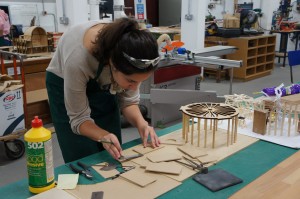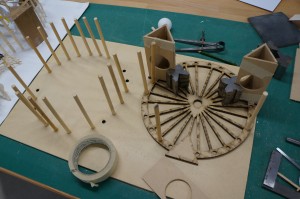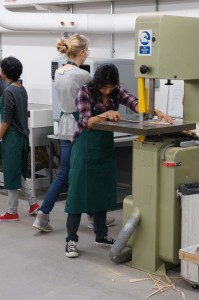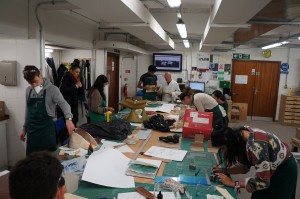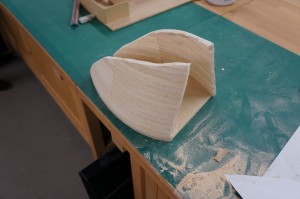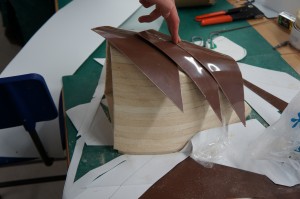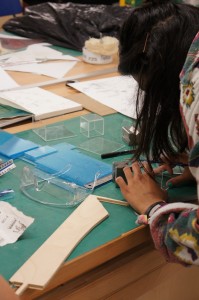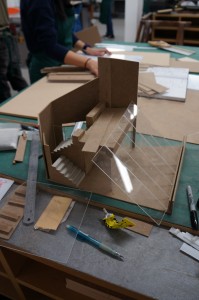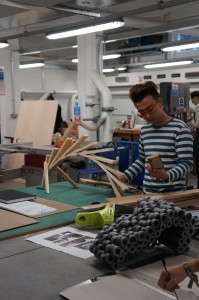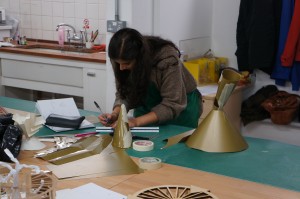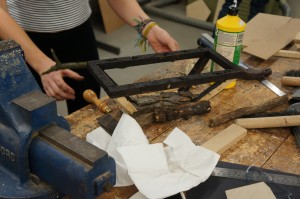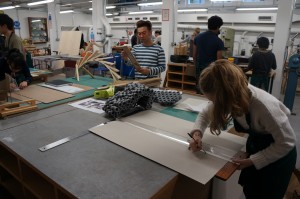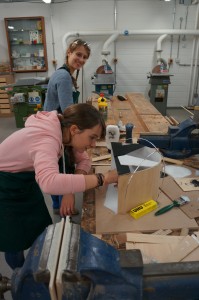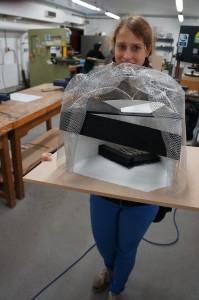 Last week 2nd year students were given the task of further refining their designs for structural elements. By taking their initial ideas to the next stage they came up against many more problems to solve in particular how joining replicated components would work in practice as they made seven identical units to work with one another towards supporting a structure or forming a building form.Â
Last week 2nd year students were given the task of further refining their designs for structural elements. By taking their initial ideas to the next stage they came up against many more problems to solve in particular how joining replicated components would work in practice as they made seven identical units to work with one another towards supporting a structure or forming a building form. 



 In many cases designs will test the limits of the machines available anda degree of initiative will be required to solve the problem. In Georgia Govan’s case the angle she required for her components to fit together was too sharp to be machined and the profile nature of the laser cutter meant she had to use a ‘Jig’ to get the job done. This side of a task can often be time consuming and should not be underestimated. A lot of thought is required to design an effective jig but it’s worth the effort and the learning curve you will go through.
In many cases designs will test the limits of the machines available anda degree of initiative will be required to solve the problem. In Georgia Govan’s case the angle she required for her components to fit together was too sharp to be machined and the profile nature of the laser cutter meant she had to use a ‘Jig’ to get the job done. This side of a task can often be time consuming and should not be underestimated. A lot of thought is required to design an effective jig but it’s worth the effort and the learning curve you will go through.


 Marco Wan had an interesting approach to creating the curved planes for his design. This process is called ‘glulam’ and as the name hints at, involves laminating sheets together with layers of glue and material whilst clamped in a given shape. This produced a very strong formed shape that can and is used for many 1:1 building applications. Very nice to see a student employing this technique in their model development.
Marco Wan had an interesting approach to creating the curved planes for his design. This process is called ‘glulam’ and as the name hints at, involves laminating sheets together with layers of glue and material whilst clamped in a given shape. This produced a very strong formed shape that can and is used for many 1:1 building applications. Very nice to see a student employing this technique in their model development.
























